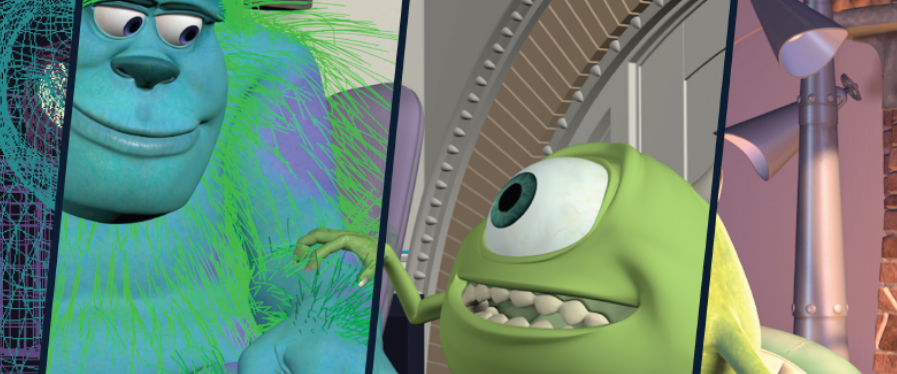3D animation is a very common animation type in modern day media, especially when it comes to companies such as Walt Disney, Pixar, Dreamworks and Blue Sky. Pixar’s Toy Story was the first 3D fully animated movie, first released in 1995. However Pixar did not use popular programmes such as Maya or Cinema 4D, but a software called Renderman, which they still use to this date. For this task I looked at different resources from YouTube, Wikipedia and the Pixar website itself. In this task I have chosen 3 Pixar shorts to compare when it comes to animation technniques, creation process and various job roles, however it is important to know the difference between Forward and Inverse Kinematics before going into 3D animation.

The difference between the two kinematics is very simple- Forward Kinematics is when a 3D robot computes the position of an End-Effector depending on the joint parameters, whereas Inverse Kinematics is when an animator manually maps out the final position on an End-Effector. An example of this would be the bending of a leg, forward kinematics would bend the knee and flatten the foot, whereas inverse could bend the foot backwards or sideways, depending on the animators choice. An End-Effector is the end point of an object, for example the tips on a finger on a hand or the toes of a foot, something that is design to interact with the space/ environment around it.
The first short film I decide to look at was one of Pixar’s theatrical shorts, Presto. This animation is about the feelings of the bunny ‘Alfie’, when he’s been neglected one too many times and the love/ hate relationship between it and the magician. Presto is a mixture of both old and new style of comedy- older comedies were filled with quick and simple jokes like slipping on a banana or someone making a fool of themselves, whereas now people like to relate to humour and come to a funny conclusion rather than being told the punch line straight away. In the videos below it’s clear to see the process of what stories were going to be used for the final product, this was done by making several different gags, some being funnier than others and getting a group of people to discuss it. Like my ‘Warbutons Advert’ task, Pixar created an animatic to see what the short film would turn out like before going into fully animating it.
The programme Pixar used was Renderman, a rendering programme they have been using for over 20 years. Their first step to making a 3D animation, the creators at Pixar created real life sculpture out of clay because the substance is much easier to work with and they can then base the CGI characters off the real life ones they made. Pixar usually do this with a lot of their films, including ‘Inside Out, as well as drawing characters and scenes out using pen and paper. It’s not until after all the shots are complete, that the graphic designers put in more detail such as hair and clothe creases. For observing the first animatic, Pixar had drawn over 150 frames just for this 5 minute sketch, and this doesn’t include the other frames created when animating the figures in Renderman. Additionally throughout the video the character shape changes due to experimenting with what shape heads portrays a certain character style- this doesn’t become an issue until rendering on Renderman as that’s when the character design starts.
http://www.pixar.com/short_films/Theatrical-Shorts/Presto
During the 2004 released film ‘The Incredibles’, there is a scene near the end of the film where Mrs Incredible is listening to voice messages from Kari, the babysitter about how frantic it is to look after Jack Jack, Mr and Mrs Incredible’s baby. The short Pixar film ‘Jack Jack Attack’ shows what happens between Jack Jack and the baby sitter, as well as new powers of Jack Jack that weren’t shown in the film and what happens to non-supers after having dealt with meta humans.
By looking at the different media the different stages of the creation of both Jack Jack Attack and The Incredibles, as they were both made for one film, it made finding the processes easier. This Pixar short was released after the film in 2005- character design was a step they could leave out as the characters were created in Renderman for the original film. The characters were based off real life people relating to Jason Lee, one of the main designers, Kari was based off his niece and Jack Jack was based off of his own son, except for a few ticks to make it more cartoon like, they were created by character designers Teddy Newton and Tony Fucile. Newton and Fucile used clay to model the characters like in Monsters Inc and Presto. However to figure out the plot and script throughout the short, the team of Pixar writers (Mark Andrews, Rob Gibbs, Teddy Newton and Bosco Ng) who found it ‘much easier as they only had to work with Kari and Jack Jack with the cameo appearance of Syndrome (voiced by Jason Lee) and the investigator Rick Dicker (voiced by Bud Luckey).
http://www.pixar.com/behind_the_scenes/Sculpting#/node/3834
From looking at both of these shorts it does give me an idea as to what processes are required to do when it comes to making a 3D animation; storyboard/ animatic, 3D modelling/ animation and then rendering. I feel that I have learnt some valuable information about Pixar shorts and forward/inverse kinematics, even though I have never heard or seen the rendering programme Renderman before, I look forward to using it in the future.





